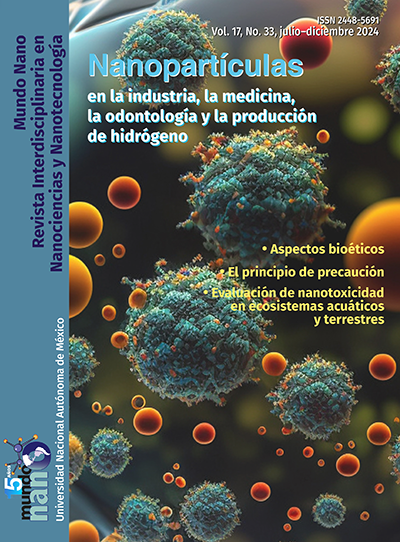H2S removal at downhole conditions using iron oxide nanoparticles
Conteúdo do artigo principal
Resumo
The objective of the present work is the study of H2S removal from heavy oil, using iron oxide nanoparticles in a controlled environment that simulates the pressure and temperature conditions of a reservoir and the aqua-thermolysis process during enhanced oil recovery with steam injection. Since molecular diffusion of H2S plays an important role during the removal process, its measurement through experimental tests was also a major goal. The research divides into three stages: 1) preparation of nanoparticles; 2) diffusion tests, and, 3) H2S removal tests. The procedure for nanoparticle preparation from a microemulsion and a metal precursor salt was successful in yielding nanoparticle sizes less than 100 nm. The diffusion coefficient of H2S in heavy oil, measured in a stainless steel PVT cell, varied between 8.3 × 10–9 and 8.9 × 10–9 m2s–1 over the range of test temperatures. Finally, over 65% of the H2S was removed when 500 ppm of nanoparticles were used.
Downloads
Detalhes do artigo

Mundo Nano. Revista Interdisciplinaria en Nanociencias y Nanotecnología, editada por la Universidad Nacional Autónoma de México, se distribuye bajo una Licencia Creative Commons Atribución-NoComercial 4.0 Internacional.
Basada en una obra en http://www.mundonano.unam.mx.
Referências
Amosa, M. K., Mohammed, I. A., Yaro, S. A. (2010). Sulphide scavengers in oil and gas industry – A review. NAFTA (Zagreb), 61: 85-92.
Capek, I. (2004). Preparation of metal nanoparticles in water-in-oil (w/o) microemulsions. Advances in Colloid and Interface Science, 110: 49-74. https://doi.org/10.1016/j.cis.2004.02.003. DOI: https://doi.org/10.1016/j.cis.2004.02.003
Crank, J. (1975). The mathematics of diffusion. 2nd ed. Oxford, UK: Clarendon Press.
Evers, J. F., Olson, G. A. (1983). A comparative analysis of reactivities of commercial iron and zinc compounds used in the removal of H2S from drilling fluids. Paper SPE 11822. Rocky Mountain Regional Meeting, Salt Lake City, UT. https://doi.org/10.2118/11822-MS. DOI: https://doi.org/10.2523/11822-MS
Husein, M. M., Patruyo, L., Pereira-Almao, P., Nassar, N. N. (2010). Scavenging H2S(g) from oil phases by means of ultradispersed sorbents. Journal of Colloid and Interfacial Science, 342: 253-260. https://doi.org/10.1016/j.jcis.2009.10.059. DOI: https://doi.org/10.1016/j.jcis.2009.10.059
International Centre for Diffraction Data. (2023). https://www.icdd.com. (Retreived, November 10, 2023).
Martínez, S. I., Bastidas, C. (2017). Application of transition metal nanoparticles in the streams production of heavy crude oil treatment: H2S mitigation. Paper SPE-185486-MS, SPE Latin America and Caribbean Petroleum Engineering Conference. Buenos Aires, Argentina. https://doi.org/10.2118/185486-MS. DOI: https://doi.org/10.2118/185486-MS
Mi, J., Zhang, B., Shen, Z., Huang, W., Casalins, A. (2017). The experimental study on H2S generation during thermal recovery process for heavy oil from the Eastern Venezuela Basin. Journal of Natural Gas Geoscience, 2: 201-208. https://doi.org/10.1016/j.jnggs.2017.07.003. DOI: https://doi.org/10.1016/j.jnggs.2017.07.003
Nassar, N. N., Husein, M. M., Pereira-Almao, P. (2010). Ultradispersed particles in heavy oil: Part II, sorption of H2S(g). Fuel Processing Technology, 91: 169-174. https://doi.org/10.1016/j.fuproc.2009.09.008. DOI: https://doi.org/10.1016/j.fuproc.2009.09.008
Pomeroy, R. D., Lacey, W. N., Scudder, N. F., Stapp, F. P. (1933). Rate of solution of methane in quiescent liquid hydrocarbons. Industrial and Engineering Chemistry, 25: 1014-1019. https://doi.org/10.1021/ie50285a021. DOI: https://doi.org/10.1021/ie50285a021
Riazi, M. R. (1996). A new method for experimental measurement of diffusion coefficients in reservoir fluids. Journal of Petroleum Science and Engineering, 14: 235-250. https://doi.org/10.1016/0920-4105(95)00035-6. DOI: https://doi.org/10.1016/0920-4105(95)00035-6
Upreti, S. R., Mehrotra, A. K. (2000). Experimental measurement of gas diffusivity in bitumen: results for carbon dioxide. Industrial and Engineering Chemistry Research, 39: 1080-1087. https://doi.org/10.1021/ie990635a. DOI: https://doi.org/10.1021/ie990635a
Upreti, S. R., Mehrotra, A. K. (2002). Diffusivity of CO2, CH4, C2H6 and N2 in Athabasca bitumen. Canadian Journal of Chemical Engineering, 80: 116-125. https://doi.org/10.1002/cjce.5450800112. DOI: https://doi.org/10.1002/cjce.5450800112
Zhang, Y. P., Hyndman, C. L., Maini, B. B. (2000). Measurement of gas diffusivity in heavy oils. Journal of Petroleum Science and Engineering, 25: 37-47. https://doi.org/10.1016/S0920-4105(99)00031-5. DOI: https://doi.org/10.1016/S0920-4105(99)00031-5
Zhu, G., Zhang, S., Huang, H., Liu, Q., Yang, Z., Zhang, J., Wu, T., Huang, Y. (2010). Induced H2S formation during steams injection recovery processes of heavy oil from the Liaohe Basin, NE China. Journal or Petroleum Science and Engineering, 71: 30-36. https://doi.org/10.1016/j.petrol.2010.01.002. DOI: https://doi.org/10.1016/j.petrol.2010.01.002





